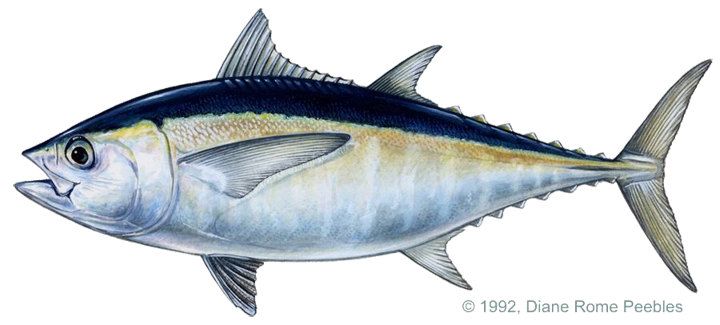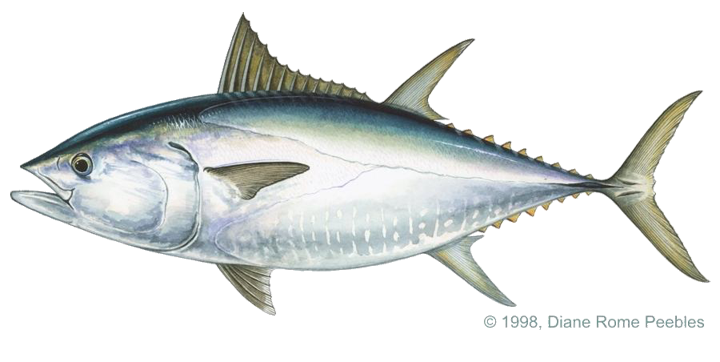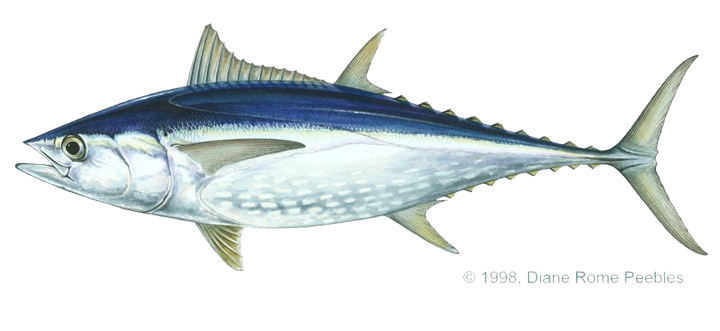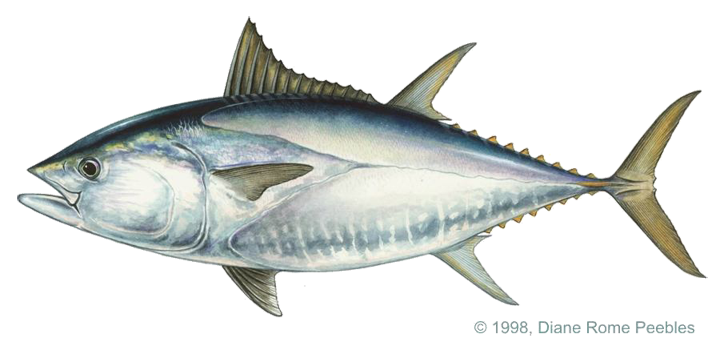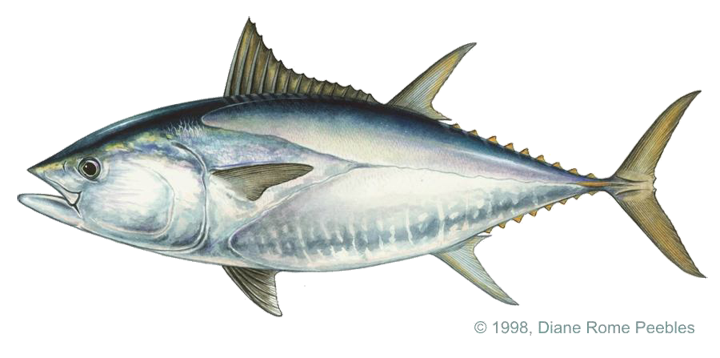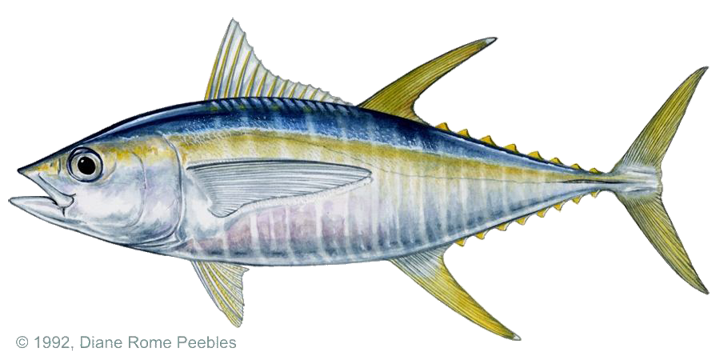Game Fish Identification Reference Guides
Albacore
(Thunnus alalunga)
(Thunnus alalunga)
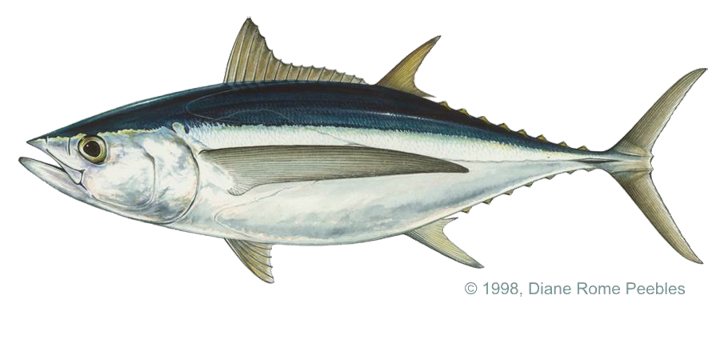
(Bonnaterre, 1788); SCOMBRIDAE FAMILY; also called longfin tuna, long finned tunny
Found worldwide in tropical and warm temperate seas, including the Mediterranean. Pelagic and migratory. Usually remains in deep clear blue tropical or warm waters, but makes seasonal migrations into colder zones (New England, South Brazil, and northern Gulf of Mexico).
The most distinguishing feature of this member of the tuna and mackerel family is its very long pectoral fins that reach to a point beyond the anal fin. The pectoral fins of other adult tunas may also be moderately long, but never extend all the way to the anal fin. Though the very long pectoral fins readily distinguish the adult albacore from other adult tunas, it should be noted that juvenile albacore might have shorter pectoral fins than similar sized yellowfin tuna, T. albacares, or bigeye tuna, T. obesus. The albacore can be distinguished from these species at any age by the lack of stripes or spots on its lower flanks and belly and by the presence of a thin, white trailing edge on the margin of the tail fin. The liver is striated on the ventral surface. The deepest part of the albacore's body is near the second dorsal fin, rather than near the middle of the first dorsal fin as in other tunas, and the vent is round rather than oval or teardrop shaped. The fins are dark yellowish, except for the white trailing edge of the tail. The anal finlets are dark.
Fishing methods include trolling with feathered jigs, spoons and lures; live and whole bait fishing with mullet, sardines, squid, herring, anchovies, sardines and other small fishes. The albacore is considered by anglers to be an excellent light tackle game fish.
In the United States the albacore is probably the most valuable tuna in terms of quality and profit. Its white meat is canned and sold commercially throughout the country, and, with the blackfin tuna, is the only kind that can carry the label “white meat tuna.
Found worldwide in tropical and warm temperate seas, including the Mediterranean. Pelagic and migratory. Usually remains in deep clear blue tropical or warm waters, but makes seasonal migrations into colder zones (New England, South Brazil, and northern Gulf of Mexico).
The most distinguishing feature of this member of the tuna and mackerel family is its very long pectoral fins that reach to a point beyond the anal fin. The pectoral fins of other adult tunas may also be moderately long, but never extend all the way to the anal fin. Though the very long pectoral fins readily distinguish the adult albacore from other adult tunas, it should be noted that juvenile albacore might have shorter pectoral fins than similar sized yellowfin tuna, T. albacares, or bigeye tuna, T. obesus. The albacore can be distinguished from these species at any age by the lack of stripes or spots on its lower flanks and belly and by the presence of a thin, white trailing edge on the margin of the tail fin. The liver is striated on the ventral surface. The deepest part of the albacore's body is near the second dorsal fin, rather than near the middle of the first dorsal fin as in other tunas, and the vent is round rather than oval or teardrop shaped. The fins are dark yellowish, except for the white trailing edge of the tail. The anal finlets are dark.
Fishing methods include trolling with feathered jigs, spoons and lures; live and whole bait fishing with mullet, sardines, squid, herring, anchovies, sardines and other small fishes. The albacore is considered by anglers to be an excellent light tackle game fish.
In the United States the albacore is probably the most valuable tuna in terms of quality and profit. Its white meat is canned and sold commercially throughout the country, and, with the blackfin tuna, is the only kind that can carry the label “white meat tuna.














